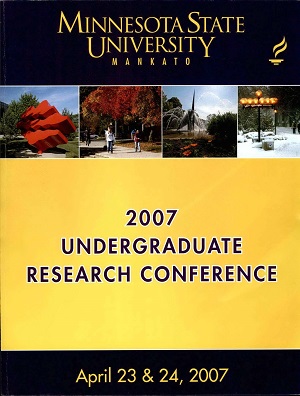Analysis of Soil Microbial Communities in Young and Old Vascular Plants Ecosystems on the Antarctic Peninsula
Location
CSU 253/4/5
Start Date
24-4-2007 10:30 AM
End Date
24-4-2007 12:30 PM
Student's Major
Biological Sciences
Student's College
Science, Engineering and Technology
Mentor's Name
Christopher Ruhland
Mentor's Department
Biological Sciences
Mentor's College
Science, Engineering and Technology
Second Mentor's Name
Timothy Secott
Second Mentor's Department
Biological Sciences
Second Mentor's College
Science, Engineering and Technology
Description
The average temperature on the Antarctic Peninsula has risen > 2.9°C over the past 50 years. This has caused a number of glaciers to recede, leaving behind newly exposed soil with minute amounts of organic matter. This creates an ideal location for a microbial successional study. We sought to investigate microbial community succession and its fundamental variations due to environmental dissimilarities by comparing microbial activity in newly exposed soil (Point 8, exposed < 20 years) with that of a well-developed soil (Stepping Stones, exposed > 500 years). Community-level carbon substrate utilization (CLSU) was used to analyze carbon catabolic activity of a transect extending out from the glacier face, as well as on Stepping Stones. Differential nucleic acid staining was used to determine the number of culturable and non-culturable bacteria. Standard plate counts were obtained to enumerate culturable organisms in the soil. Numerous morphologically distinct fungi and bacteria were isolated from cultures. CLSU patterns indicated distinctly different microbial community compositions along the Point 8 transect. A fourth distinct community was identified based on CLSU patterns from Stepping Stones. Plate counts from early successional communities revealed a bacterial component that was culturable only at low dilutions, possibly suggesting competitive inhibition. The fungal presence was unexpectedly high in the newly exposed soil, particularly when considering its alkaline pH and very low level of organic material. Our results provide a baseline for the study of microbial succession in the context of climate change.
Analysis of Soil Microbial Communities in Young and Old Vascular Plants Ecosystems on the Antarctic Peninsula
CSU 253/4/5
The average temperature on the Antarctic Peninsula has risen > 2.9°C over the past 50 years. This has caused a number of glaciers to recede, leaving behind newly exposed soil with minute amounts of organic matter. This creates an ideal location for a microbial successional study. We sought to investigate microbial community succession and its fundamental variations due to environmental dissimilarities by comparing microbial activity in newly exposed soil (Point 8, exposed < 20 years) with that of a well-developed soil (Stepping Stones, exposed > 500 years). Community-level carbon substrate utilization (CLSU) was used to analyze carbon catabolic activity of a transect extending out from the glacier face, as well as on Stepping Stones. Differential nucleic acid staining was used to determine the number of culturable and non-culturable bacteria. Standard plate counts were obtained to enumerate culturable organisms in the soil. Numerous morphologically distinct fungi and bacteria were isolated from cultures. CLSU patterns indicated distinctly different microbial community compositions along the Point 8 transect. A fourth distinct community was identified based on CLSU patterns from Stepping Stones. Plate counts from early successional communities revealed a bacterial component that was culturable only at low dilutions, possibly suggesting competitive inhibition. The fungal presence was unexpectedly high in the newly exposed soil, particularly when considering its alkaline pH and very low level of organic material. Our results provide a baseline for the study of microbial succession in the context of climate change.
Recommended Citation
Kolander, Tammy. "Analysis of Soil Microbial Communities in Young and Old Vascular Plants Ecosystems on the Antarctic Peninsula." Undergraduate Research Symposium, Mankato, MN, April 24, 2007.
https://cornerstone.lib.mnsu.edu/urs/2007/poster-session-C/5



